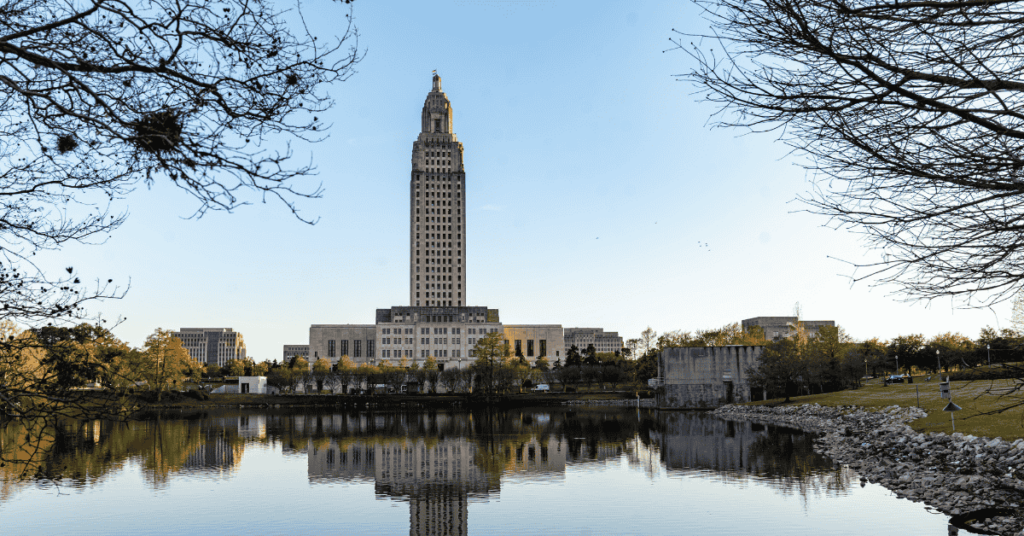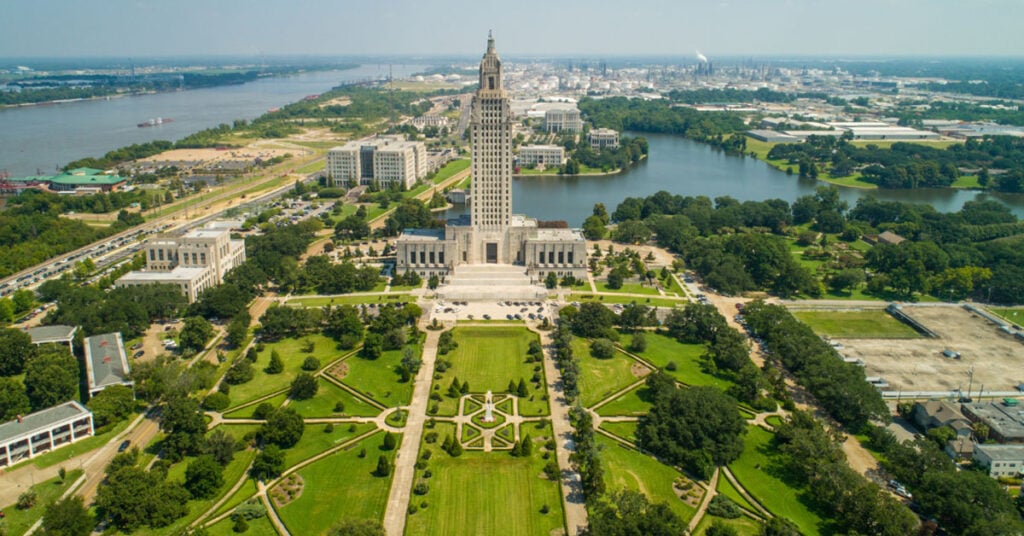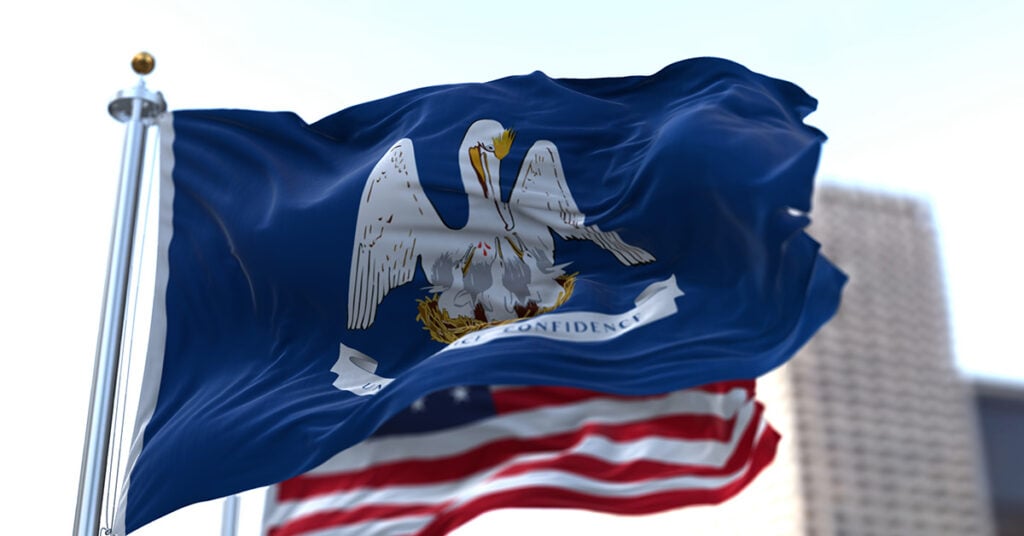Feb 4, 2013
Written by
Mike Hasten
Gannett Louisiana
BATON ROUGE — If legislators agree with Gov. Bobby Jindal’s plan to switch from personal and corporate income taxes, Louisiana would be in line with several states showing job growth.
But it could prove to be costly for those not on the high end of the income scale, critics of the plan say.
States that prosper without assessing income taxes have something in common — other sources of revenue, whether it’s major mineral resources, manufacturing or a booming tourism trade.
If the state Legislature agrees to Jindal’s plan, Louisiana would join Alaska, Texas, Florida, Nevada, South Dakota, Washington and Wyoming in having no personal income taxes. Tennessee and New Hampshire often are included in that group because they tax only dividend interest.
Louisiana also would join Nevada, South Dakota and Wyoming as states that have no corporate income taxes.
Louisiana Department of Revenue Executive Counsel Tim Barfield Jr., point man for Jindal’s push to eliminate income taxes, says it’s the administration’s belief that “the less money the government takes from people’s incomes, the better.”
Some critics of the plan contend that whether they are income taxes or sales taxes, the money still comes out of people’s incomes. Their estimates show that the swap would most benefit the wealthiest 20 percent of the state’s taxpayers while placing more tax burden on the rest.
Groups that look at the proposal to switch Louisiana to a sales-tax-based system caution that as many as 80 percent of consumers could have to pay more taxes than they do now. Hikes in sales taxes would more than offset the break from paying income tax.
Appraisers who look at it from an economic perspective say it could provide a more stable economy, which would be good for consumers because it could lead to more and better jobs in the state. Freedom from income taxes and a stable tax base that is free from some of the many complicated exemptions in the current tax code would be more attractive to businesses seeking to expand or relocate.
Barfield says the nine states that have no personal income tax produced 62 percent of the new jobs in the United States during the past 10 years. He said if Louisiana had no income taxes, it also could grow.
Matt Gardner, head of the Institute on Taxation and Economic Policy, said “if the governor’s goal is to grow the state’s economy, he’s going to be grossly disappointed” because Louisiana’s current low income tax doesn’t hurt the state. “There’s no question that replacing the low income tax with the nation’s highest sales tax would make Louisiana an outlier.”
Barry Erwin, president of the Council for a Better Louisiana, who in principle supports revamping the tax structure, says lawmakers have several questions to consider when weighing the Jindal plan.
“One is that even though people would not be paying income taxes, would they be comfortable paying higher sales taxes on more goods and services in exchange?” he asks. “It’s probably a psychological question, as much as anything, but it’s an important consideration, as is the perceived impact on economic activity on businesses of various sizes and varieties.”
Erwin also wonders whether lawmakers would be able to withstand the temptation to add back many of the exemptions that might be eliminated.
Asked about a possible negative impact from Louisiana having the highest sales tax in the nation, Barfield said “people look at the overall tax situation if there’s no income tax.” He said that concept was taken into consideration in doing the feasibility analysis of “what’s the best tax base to grow our economy?” and he believes “people will look at the entire picture.”
“I rather like the plan, sales taxes broadened to services,” said Scott Drenkard of the Tax Foundation, a group that studies taxes with an eye on business development. From what he can tell, the sales tax rate would climb from 4 percent to 7 percent.
“If done correctly, it could be one of the most historic tax reforms,” he said.
Louisiana currently ranks 32nd in the Tax Foundation’s business tax climate, and Drenkard said that from his impression of the governor’s intended plan, the state would climb to 4th in the rankings. “That’s the largest jump in recent history — at least the past two years.”
But he considers the administration plan to hike tobacco taxes “bad tax policy.”
States with no income tax revenue fund government services in a variety of ways but most have a base on which to build.
Texas, which is being studied by the Jindal administration, balances its budget with oil and gas revenues and with a broad sales and use tax base, starting with a state-assessed 6.25 percent tax on sales and services. Many things that are not currently taxed in Louisiana, like cable and satellite television or laundry and dry cleaning, are taxed in Texas, and some things have assessments on top of the state rate.
Many services are taxed, and there’s a $5 per customer tax for entering a club that has naked dancers and serves alcohol.
But Drenkard said the worst thing about Texas’ tax structure is its margin tax. He said he would not recommend that Louisiana or any other state copy it.
Most states levy sales taxes on the end product, but Drenkard said Texas levies the tax on every step in the manufacturing process or other business processes. He said taxation “pyramids” with what’s referred to as a “gross receipts tax,” and businesses pay tax several times on the same item.
“The Texas economy is a success, despite the margin tax,” he said.
Tennessee currently levies the highest combined local and state sales tax in the nation at 9.4 percent. But if the Jindal plan is approved, Louisiana would surpass that mark as many local governments assess sales taxes higher that the state’s 4 percent.
For example, residents of Alexndria, Baton Rouge and New Orleans pay 9 percent combined state and local sales tax on purchases.
Alaska eliminated its income taxes after a huge oil discovery that continues to supply so much money to the state that it writes a check to every resident as a share of the state’s revenues.
The state also does not impose a property tax or sales tax, but municipalities do. The largest amount of its revenue comes from mineral production. About 11 percent of Alaska’s revenues come from sale taxes, and it also taxes a few other things, like motor vehicle licenses.
Florida has no state income or property tax but brings in considerable revenue from sales and use taxes, much of it produced by the tourism industry. The state assesses a 6 percent sales and use tax that exempts only food and prescription medicines, producing almost 50 percent of state revenues.
Because the state tax is high, municipal governments in Florida can impose no more than 1.5 percent sales tax.
Locally imposed Florida property taxes are among the highest in the country. Like Louisiana, the Florida Legislature approved homestead exemptions but they cover up to $50,000 of the property value, rather than the $75,000 exemption in Louisiana. The Florida exemption is set at $25,000 for school taxes.
Floridians also pay use taxes. Like Louisiana, Florida has a law on the books requiring shoppers who purchase goods on the Internet to self-report use taxes on those purchases. The state also has a Documentary Stamp Tax on all documents that transfer interest in real property, such as land and houses.
Florida continues to assess a corporate income tax, but it produces only about 2.7 percent of the state’s revenue, according to a Tax Foundation report.
Nevada’s jackpot is gambling and tourism that produce more than half of the state’s revenue, so it doesn’t have to impose much in other taxes — and neither do local governments. The Tax Foundation rates it as having the second lowest combined local-state tax loads in the country, and it ranks third in its Business Tax Climate.
South Dakota leads the nation in the lowest combined tax burden and has the best business tax climate. It has no personal or business income tax, no franchise tax, no personal property tax, no business inventory tax and no inheritance tax. Its state sales tax is 4 percent, and the average local sales tax is 2 percent
Since it has the Black Hills, Mount Rushmore, the Badlands, Custer State Park and the Crazy Horse Monument, tourism is a major industry in South Dakota, bringing in sales tax revenue that comprises more than half of the state’s income.
South Dakota imposes use taxes on Internet and catalog sales, services purchased outside the state but used inside, wholesale purchases and anything purchased outside the state and mailed back into the state.
Washington relies heavily on sales tax revenues, getting 60.5 percent of its annual revenue from that one source, the Tax Foundation report shows. The state has a corporate income tax, but the report shows it gets less than 1 percent of its revenues from that source.
Wyoming has extensive mineral resources that fund much of the operations of state and local governments. Sales taxes, generated largely by tourism at Yellowstone and The Grand Tetons national parks and Devil’s Tower National Monument, produce 31.2 percent of its revenue. The state also assesses property tax that supplies about 40 percent of state revenues.
Tennessee has income from coal mining, electrical power generation and manufacturing to go with sales tax proceeds, which make up about 50 percent of state revenue.





